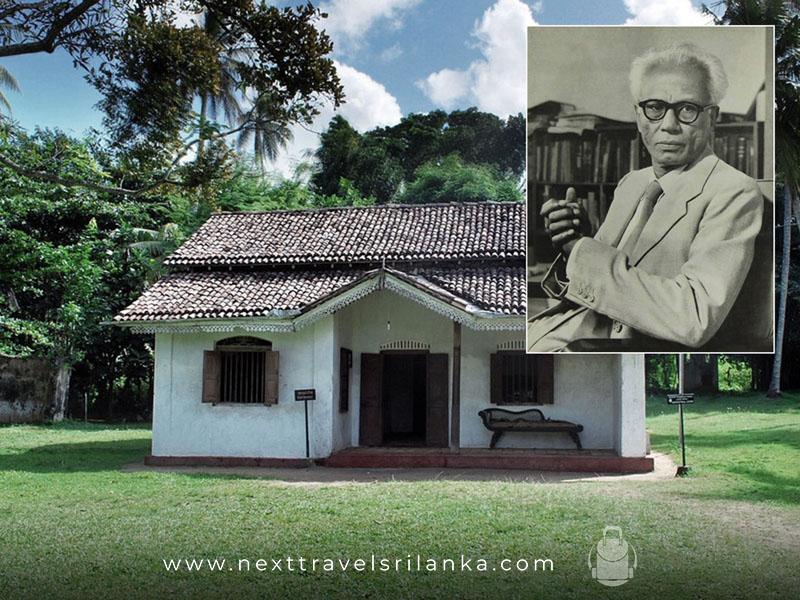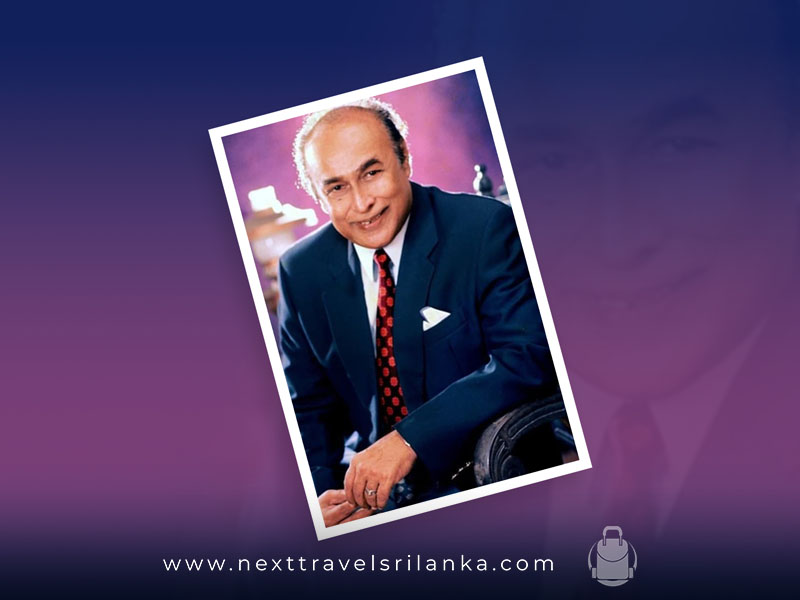
Authors have been among the world’s most important people for centuries, contributing to the record of history and entertaining us through storytelling. As Sri Lanka is a country that owns rich literature, there are a number of well-known authors in the country who are well-known for writing poetry, fiction, nonfiction, technical writing, or even poetry. They have carried on the tradition of storytelling by producing popular works that have received praise from readers all over the world. However, there are only a few Sri Lankan authors who were able to gain a reputation and appreciation from all over the world. Martin Wickramasinghe is undoubtedly one of them. He is also an influential literary figure since he is the pioneer of modern Sinhala literature. Keep reading to know more about life and interesting facts about Martin Wickramasinghe!
Early Life of Martin Wickramasinghe
Martin Wickramasinghe was born on the 29th of May 1890. His full name was Lama Hewage Don Martin Wickramasinghe. He was born in the beautiful Southern coastal village of Koggala.
His parents were Lamahewage Don Bastian Wickramasinghe and Magalle Balapitiya Liyanage Thochchohamy. He was the only son of this small family. Wickramasingha was homeschooled as a little kid. He was able to read and write the Sinhala alphabet by the age of five. He also received primary education from the village temple. His brilliance as an author was noticeable from a very young age as he learned the Devanagiri script and long sections from Hitopadesha by memory as a little kid.
Wickramasinghe received his formal education at a vernacular school. Then, in 1897, he moved into an English school called Buona Vista in Galle. That is where he got familiar with English as well as Latin languages. Unfortunately, after the untimely demise of his father, he lost interest in his education. Hence, he went back to a vernacular school at Ahangama.
However, Wickramasingha started off his career at the age of 16 as a bookkeeper. This also had a major influence on his career as an author. He also worked in a Commissions agency and then he again became a bookkeeper in Batticaloa.
Martin Wickramasinghe as a Journalist
Under the pen name Hethu Vaadi which gives out the meaning ‘Rationalist’, Martin Wickramasinghe began to write articles for the Sinhala newspaper called ‘Dinamina’ in 1916. The press baron D. R. Wijewardena’s Associated Newspapers of Ceylon Limited (ANCL) owned this paper.
Later, he was able to give birth to a controversial series namely “Plants and Animals”. Also, with time, Wickramasinghe was able to become an editor of Dinamina. Then in 1927, he decided to join Lakmina newspaper by leaving Dinamina. But again in 1931, he returned to ANCL by becoming the editor of Silumina, a weekend newspaper. Subsequently, Wickramasinghe became the editor of Dinamina in 1932 and he served in the position until he retired in 1946.
Literary Career of Wickramasinghe
Martin Wickramasinghe is an author with an incomparable contribution to Sri Lankan literature. Hence, there are a lot of interesting details about the literary career of this great author.
As per records, Wickramasinghe’s literary career started in the year of 1914 with his first novel, Leela and an anthology of essays on literary criticism called the Shastriya Lekhana. With time, he was able to enhance the standards of Sinhala literature readers through his works and campaigns. For his criticism, he was highly influenced by the best of Indian and Western traditions. Hence, Wickramasinghe is popular as both a literary critic and a renowned author.
Apart from that, his novel ‘Gamperaliya’ is famous as the first Sinhalese novel which can be compared with the great novels of modern literature. Besides, Gamperaliya became a best seller of the time. So, Wickramasinghe formed a trilogy from this novel, which got the names – Yuganthaya and Kaliyugaya. Later, many movie directors adapted Wickramasinghe’s trilogy into movies and tv series.
Altogether, Wickremasinghe has published 14 novels and 8 collections of short stories. His plots usually revolve around the themes of Buddhism, art, literary criticism, philosophy, cultural anthropology, and history. Some of his famous literary works like ‘Madol Doova’, ‘Viragaya’, ‘Gamperaliya’, and ‘Yuganthaya’ have been translated into many languages such as Tamil, English, Russian, Dutch, Japanese, etc.
Martin Wickramasinghe was also a member of reputed commissions such as the Radio Broadcasting Commission and the National Languages Commission. One of the highlights of his literary career is him becoming a member of the order of the British empire in the 1953 Coronation Honors by her majesty Queen Elizabeth II.
His Personal Life
Martin Wickremainghe’s wife is Kataluwe Balage Prema De Silva. Their marriage dates back to the 30th of November, 1925. The couple first lived in Mount Lavinia in Colombo. They faced an unfortunate incident right after their marriage as their first son passed away when he was only 3 months old. However, the couple had 6 more children. Their eldest son served as the high commissioner of Sri Lanka to the United Kingdom from 1995 to 1999.
Martin Wickramasinghe built a house at Mount Lavinia in 1939. As the Royal Air Force (RAF) was established in Koggala, in 1941 his family house was taken over by the military. In 1950, in order to allow his children to attend university, Wickramasinghe sold his house and moved to Thimbirigasyaya. Then he moved to Bandarawela in 1956 and took residence.
Later Life
During the last years of his life, he visited Cuba. That was specifically in 1968. This visit was upon an invitation from the Cuban government. Moreover, for his 80th birthday, the Sri Lanka writers congress organized celebrations in Koggala and many other parts of the country as well.
In 1970, the University of Colombo awarded him a doctorate of literature. In 1972, the Government of India welcomed Martin Wickremasinghe as a guest to visit places like Sanchi, Buddhagaya, Gijjakuta, Nalanda, and other regions that Lord Buddha trod. Besides, a highlight of Wickramasinghe’s later life was receiving his first presidential award for literature. He later proceeded to donate the money to the ministry of cultural affairs as a scholarship for a university student. As his last publication, he wrote ‘Bhava Tharanaya‘ and another collection of essays.
Martin Wickramasinghe passed away on the 23rd of July 1976. His house at Koggala is now preserved as a folk museum.
Martin Wickramasinghe Trust
The Sri Lankan Government identified the Martin Wickramasinghe Trust as a charitable organization. Preservation of the manuscripts, the first edition of all his books, tape recordings, and all his life memories and work are the main objectives of this trust. Furthermore, the Martin Wickramasinghe trust manages the Martin Wickramasinghe house and folk museum in Koggala. As such, this trust contributes immensely to carrying out the legacy of this great writer.
Martin Wickramasinghe Museum
Simply, the museum showcases the life of the great writer through a series of photographs, awards, and souvenirs. It is established in the house where Martin Wickramasinghe was born. As mentioned earlier, the Martin Wickramasinghe trust established it. They opened it to the public in 1981.
This house stands amidst a rich ecosystem rich with indigenous trees, shrubs, and birdlife. Many love to visit the house as it depicts the house and surroundings of Koggala which many of his writings are based on.
This 200-year-old house is partly renovated. Besides, this house is similar to a typical southern abode, but it also shows high influences from Dutch architectural features. However, during the second world war, the Royal Air Force took this house to use as a residence of a female air force officer.
With the contributions of the trust fund, the museum was able to house a collection of many artifacts that depicts the history of Sri Lankan culture. Apart from that, the tombs of Mr. and Mrs. Wickramasinghe are also there in the seven-acre land area of the museum. In that manner, this gradually became a great place to get a sound understanding of the development of agriculture, agro-industry, pottery, metal craft artifacts, and the Buddhist culture of the country.
Apart from that, you will be able to understand the great personality of Martin Wickramasinghe a little bit more and what the rural village of Koggala and its people meant to him if you visit this museum. Of course, the rural bliss of his home was a great environment for the background of his plots.
At the entrance to the museum, there is a stall with Martin Wickramasinghe’s books.
The Bottom Line
As a whole, Martin Wickramasinghe will be an immortal figure in Sinhala literature for his immense contributions to the field. Indeed, just a few words are not capable of admitting his literary work. However, at present, the best way to admire this wonderful author is to visit the Martin Wickramasinghe museum and read his books. So, don’t forget to pay a visit to the museum when you are in Koggala if you are interested in this renowned author of Sri Lanka. Happy and safe traveling!

